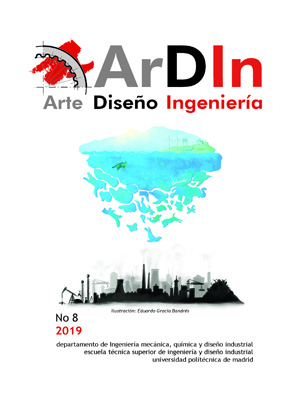El diseño como herramienta de desarrollo humano sostenible = Design as a tool for sustainable human development
DOI:
https://doi.org/10.20868/ardin.2019.8.3867Keywords:
Diseño, Desarrollo, Metodología, Design, Development, MethodologyAbstract
Resumen
La actividad del diseño industrial se desarrolla en un contexto y unas circunstancias, los cuales, concretados en problemas y necesidades, marcan sus objetivos y su dirección de evolución. El diseño es por definición desarrollo, cambio, y por ello puede generar un impacto en la realidad en la que existe. Las personas son las protagonistas del desarrollo, y también del proceso de diseño, que según las metodologías más actuales, como el design thinking y el diseño centrado en el ser humano, debe generarse por y para las personas, como herramienta de respuesta a sus problemas. Esta herramienta de cambio se propone como una nueva funcionalidad del diseño. Sus características se definen mediante una comparación de metodologías: de aquella propia de la producción artesanal, y de la propia del diseño industrial proyectual (tradicional y actual), buscando sus similitudes y diferencias, y desembocando en una integración equilibrada de ambas, que generará un proceso combinado capaz de originar una mejora en situaciones de subdesarrollo.
Abstract
The activity of the industrial design is developed in a certain context and circumstances, which may be specified by problems and needs, settling its objectives and direction. Design means by definition development, change, and that is the reason because it can generate an impact in the reality in which it exists. People are the principal subjects of development, and also of the designing process, which according to the modern methodologies like design thinking and human centered design, must be generated by and for human beings, as a tool for solving their problems. This tool for change is proposed as a new usefulness of design.
Its characteristics are defined though the comparison of methodologies: the one used by the craftwork production and the one used by planning industrial design (traditional and contemporary), searching for its similarities and differences, and finally leading to a balanced integration of both of them, that will generate a combined process capable of originate an improvement in underdevelopment situations.
Downloads
References
Brown, T., & Wyatt, J. (2010). Design Thinking for Social Innovation. Standford Social Innovation Review.
Hegoa, Instituto de Estudios sobre Desarrollo y Cooperación Internacional. (2000). Diccionario de Acción Humanitaria y Cooperación al Desarrollo. Icaria y Hegoa.
IDEO.org. (2015). Field Guide to Human Centered Design.
Löbach, B. (1981). El proceso de diseño. Barcelona: Gustavo Gili.
Munari, B. (1993). ¿Cómo nacen los objetos? Apuntes para una metodología proyectual.Barcelona: Gustavo Gili.
Norman, D. A. (2013). The design of Everyday Things. MIT Press.
ONU. (1987). Our Common Future: Brundtland Report.
ONU. (2015). Objetivos de Desarrollo del Milenio, Informe de 2015.
Papanek, V. (2014). Diseñar para el mundo real. Barcelona: Pollen Edicions.
Sennet, R. (2013). Artesanía, tecnología y nuevas formas de trabajo. Barcelona: Katz y Centre de Cultura Contemporània de Barcelona.
Suri, J. F. (2007). Involving people in the process. Paper presented at the Include. Londres.
Torrent, R., & Marín, J. (2013). Historia del diseño industrial. Madrid: Cátedra.
Downloads
Published
Issue
Section
License
ArDIn does not charge authors for processing or publishing an article and provides immediate Open Access to its content. All content is available free to the user or their institution. Users are permitted to read, download, copy, distribute, print, search or link to the full text of articles, or use them for any other lawful purpose, without prior permission from the publisher or author. This is in accordance with the BOAI definition of open access.
- Authors retain the copyright and grant to the journal the right to a Creative Commons attribution / Non-Commercial / Non-Derivative 4.0 International (CC BY NC ND) License that allows others to share the work with an acknowledgement of authorship and non-commercial use.
- Authors may separately establish additional agreements for the non-exclusive distribution of the version of the work published in the journal (for example, placing it in an institutional repository or publishing it in a book).
Unless otherwise indicated, all contents of the electronic edition are distributed under a Creative Commons license.













